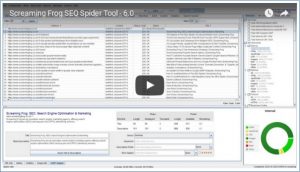 Although most marketers accept that integrating marketing communications is a powerful approach, campaigns today seldom realize the full power of the methodology commonly known as IMC.
Although most marketers accept that integrating marketing communications is a powerful approach, campaigns today seldom realize the full power of the methodology commonly known as IMC.
Most of us synchronize our earned and owned media in some way. Many of us have learned empirically the right combinations of tactics that lead to the most engagement, or the highest landing page traffic. What’s often missing in campaigns is the ability to plan, manage and measure the synergy that occurs as a result of powerful IMC strategies and strong linked tactics. It’s the acceleration caused by this synergy – the combination of marketing efforts that add up to more than the sum of their parts – that provides the best results.
Synergy looks and feels different in every IMC campaign. The good news is there are common elements to successful IMC campaigns that result in increased synergy. The first is message alignment. IMC requires a persistent, consistent messaging strategy across channels. A core, or integrated, strategy statement should drive every campaign message. This statement is rarely shared with an audience. It is simple, to the point, and states what we’re doing and why we’re doing it. For a healthcare practice, it might be something like “We’re here to provide the best care in a safe environment.” An organic food company might use “Delivering the healthiest products to families.” Every single message should be aligned with this basic message.
Another important ingredient to powerful IMC campaigns is of course to choose the best combination of messaging channels. Most people understand the importance of selecting channels that are right for the target audience. However, it is crucial to select a set of secondary channels that boost the performance of the overall campaign. If you think about it, you know which messaging channels complement each other. It can be as simple as automatically linking your Instagram account to Facebook, or as complicated as buying digital billboards to supplement a PSA.
The selection of channels is part of creating a strong IMC strategy. Too many projects are defined with only goals and tactics, without the strategies that provide the bridge in between. A good strategy should be a consistent, long-term part of an IMC plan. A good strategy allows for changing tactics that are not working, without losing the direction of the campaign. Part of the beauty of IMC is that within each strategy is an infinite number of linked tactics.
If strategies provide the roadmap for an IMC campaign, then linked tactics are the fuel. Even if there is no overall IMC strategy in place, linked tactics are used every day. For example, every editorial placement gets more reads and shares when posted to social media. The placement is one tactic; the post to social media is linked as the second tactic.
The idea is to be conscious of the linked tactics already in use, and then build on those to create new sets of linked tactics. This might mean combining new sets of tactics, and playing with the timing between linked tactics to see if better results can be gained. It might also mean adding a third, or even a fourth linked tactic as a test. This iterative activity is the heart of IMC, and where anyone can try to boost results on a daily basis. It’s also where creativity, experience and intuition come together. Of course, working iteratively with linked tactics requires reviewing results on an ongoing basis to know what’s working, and what’s not.
Creating core strategy statements, selecting the best messaging channels, designing good strategies and continuing to expand a toolkit of linked tactics are all ways to get more results out of IMC. Even doing one or two of these things on a regular basis can significantly boost the performance of an IMC campaign, or any communications project for that matter.
When pitching a release, try creating a core strategy statement that is a simple description of the message. Check all tweets, emails and other messages to make sure they’re in alignment with that statement. Try creating two strategies that drive an overall project or portion of the project. Those strategies should include selecting effective combinations of channels and be consistent over the long term. Or for those that are on the front lines, consciously build a toolkit of linked tactics. Take that toolkit from campaign to campaign, and customize it for use in each subsequent effort. Start somewhere, and stay with it.
If executed correctly, a campaign using an IMC approach will always achieve exponentially stronger results than a traditional communications project. Adding even small doses of IMC will boost results.
(179)
Report Post






